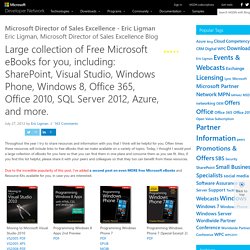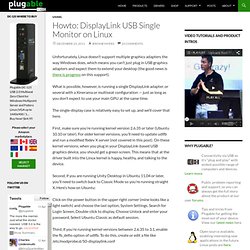

Moonbase - Welcome. AI Computer Vision. Large collection of Free Microsoft eBooks for you, including: SharePoint, Visual Studio, Windows Phone, Windows 8, Office 365, Office 2010, SQL Server 2012, Azure, and more. - Microsoft SMS&P Partner Community Blog - By Eric Ligman. Throughout the year I try to share resources and information with you that I think will be helpful for you.

Often times these resources will include links to free eBooks that we make available on a variety of topics. Today, I thought I would post a large collection of eBooks for you here so that you can find them in one place and consume them as you see fit. Also, if you find this list helpful, please share it with your peers and colleagues so that they too can benefit from these resources. Due to the incredible popularity of this post, I’ve added a second post on even MORE free Microsoft eBooks and Resource Kits available for you, in case you are interested.
I hope you find these resources to be helpful in learning about and using the various solutions and technologies referenced. Did you find this information helpful? By the way, another great place to find free books is the E-Book Gallery for Microsoft Technologies on the TechNet Wiki. Thanks again for being a reader of my blog! Howto: DisplayLink USB Single Monitor on Linux. Unfortunately, Linux doesn’t support multiple graphics adapters the way Windows does, which means you can’t just plug in USB graphics adapters and expect them to extend your desktop (the good news is there is progress on this support).

What is possible, however, is running a single DisplayLink adapter, or several with a Xinerama or multiseat configuration — just as long as you don’t expect to use your main GPU at the same time. The single-display case is relatively easy to set up, and we’ll cover that here. First, make sure you’re running kernel version 2.6.35 or later (Ubuntu 10.10 or later). For older kernel versions, you’ll need to update udlfb and run a modified fbdev X server (not covered in this post). On these kernel versions, when you plug in your DisplayLink-based USB graphics device, you should get a green screen. Second, if you are running Unity Desktop in Ubuntu 11.04 or later, you’ll need to switch back to Classic Mode so you’re running straight X.
And add the single line. Programmatically rearranging displays - Matthew van Eerde's web log. Most of my test machines and my laptop have a single display; but I have two dev machines which are each connected to two displays.

When I clean install Windows, I sometimes need to rearrange the displays: Since I clean install Windows frequently, I wrote myself a little C++ app which does this programmatically using EnumDisplayDevices / EnumDisplaySettings / ChangeDisplaySettingsEx. Source and binaries attached. Pseudocode: for (each device returned by EnumDisplayDevices) { grab the position and the height/width using EnumDisplaySettings.
PCL Developers Blog. We’ve implemented almost everything, what was planned, and now we want to present our results.

First of all please watch this video with results on the whole Castro dataset. Road is marked with red, left and right road borders are indicated by green and blue lines respectively. The main problem is the presence of holes in the road surface. This is caused by the holes in the input disparity maps. We decided not to inpaint them, because we have no information about scene in those points. Our method has a significant advantage in situations with one or both curbs are clearly visible (with corresponding sidewalks). Next, I’m going to show you the numerical results. It is with pleasure to share the successful completion of this Toyota Code Sprint in this final blog post.
Follows is an in-depth report detailing the project’s accomplishments, as well as design and validation considerations: Click here for a high resolution version of the report. This robustness has limits, of course. Where Y. Screenshots - VirtualBox. New computer technologies shown to expose personal information. A combination of facial recognition software, cloud computing and social networking can be used to learn individuals' identities from photographs (Photo: Yago Veith via Flickr) Facial recognition software, social networking and cloud computing ... they're all technological advances that alone have thrown up questions regarding privacy.

According to a recent Carnegie Mellon University study, however, the three technologies can be combined to learn peoples' identities and other personal information about them, starting with just a photograph of their face. "A person's face is the veritable link between her offline and online identities," said Alessandro Acquisti, associate professor of information technology and public policy, and leader of the study. "When we share tagged photos of ourselves online, it becomes possible for others to link our face to our names in situations where we would normally expect anonymity. " About the Author Post a CommentRelated Articles.
Myth of the Dying Mouse.